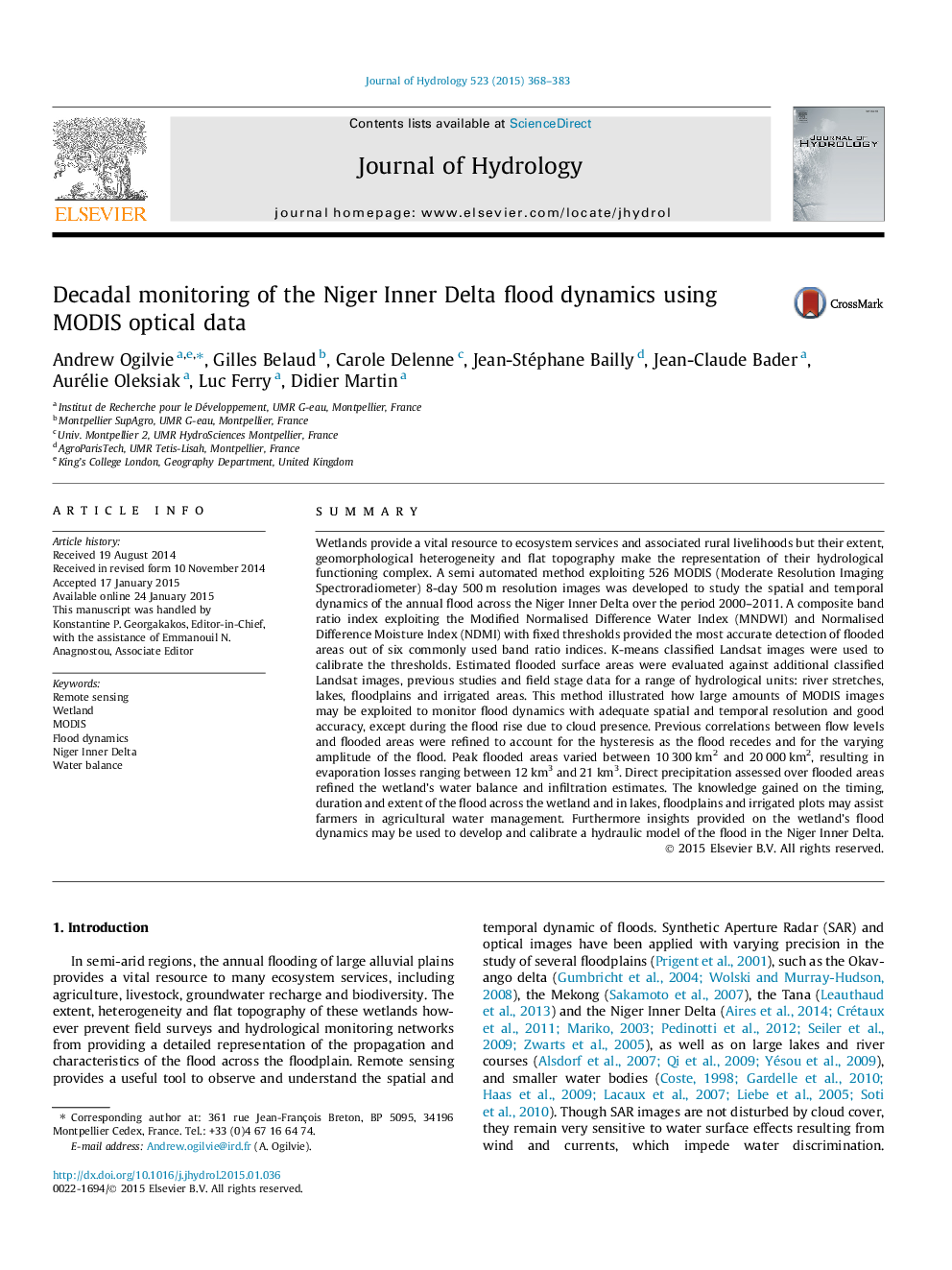| کد مقاله | کد نشریه | سال انتشار | مقاله انگلیسی | نسخه تمام متن |
|---|---|---|---|---|
| 6411705 | 1629927 | 2015 | 16 صفحه PDF | دانلود رایگان |

- Semi-automated method to monitor floods over 10Â years using 8-day 500Â m MODIS images.
- Combined MNDWI-NDMI index most suited out of 6 band ratio indices to detect floods.
- Flood dynamics coherent with field data in river, lakes, floodplain and irrigated plots.
- Correlations between total flooded area and flows refined accounting for hysteresis.
- Benefits to hydrology and agricultural water management are illustrated.
SummaryWetlands provide a vital resource to ecosystem services and associated rural livelihoods but their extent, geomorphological heterogeneity and flat topography make the representation of their hydrological functioning complex. A semi automated method exploiting 526 MODIS (Moderate Resolution Imaging Spectroradiometer) 8-day 500Â m resolution images was developed to study the spatial and temporal dynamics of the annual flood across the Niger Inner Delta over the period 2000-2011. A composite band ratio index exploiting the Modified Normalised Difference Water Index (MNDWI) and Normalised Difference Moisture Index (NDMI) with fixed thresholds provided the most accurate detection of flooded areas out of six commonly used band ratio indices. K-means classified Landsat images were used to calibrate the thresholds. Estimated flooded surface areas were evaluated against additional classified Landsat images, previous studies and field stage data for a range of hydrological units: river stretches, lakes, floodplains and irrigated areas. This method illustrated how large amounts of MODIS images may be exploited to monitor flood dynamics with adequate spatial and temporal resolution and good accuracy, except during the flood rise due to cloud presence. Previous correlations between flow levels and flooded areas were refined to account for the hysteresis as the flood recedes and for the varying amplitude of the flood. Peak flooded areas varied between 10Â 300Â km2 and 20Â 000Â km2, resulting in evaporation losses ranging between 12Â km3 and 21Â km3. Direct precipitation assessed over flooded areas refined the wetland's water balance and infiltration estimates. The knowledge gained on the timing, duration and extent of the flood across the wetland and in lakes, floodplains and irrigated plots may assist farmers in agricultural water management. Furthermore insights provided on the wetland's flood dynamics may be used to develop and calibrate a hydraulic model of the flood in the Niger Inner Delta.
Journal: Journal of Hydrology - Volume 523, April 2015, Pages 368-383